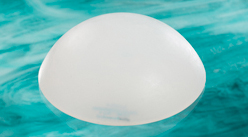
While fat grafting to the buttocks is the most common and popular way to create a bigger derrière, it is not for everyone. The unpredictability of fat graft volume retention and the lack of adequate donor fat make the Brazilian Butt Lift (BBL) not possible for some patients. This leaves the use of buttock implants as the alternative choice.
Implants predate the use of fat for buttock augmentation by over a decade. With the predominance and the more recent appeal of fat grafting, implants have been associated with exaggerated reports of complications. While any implant is going to be associated with more complications than a fat graft, there complications are actually no higher than that of breast implants.
In the April 2013 issue of Plastic and Reconstructive Surgery, an article entitled ‘ Buttock Augmentation with Silicone Implants: A Multicenter Survery Review of 2,226 Patients‘. In this paper, over 2,200 cases of buttock augmentation with silicone implants were reviewed from nearly 20 surgeons. Their results showed a 38% complication rate that was anything from an incisional separation to an implant infection. The most common complication was a near 8% incidence of incisional separation. The most dreaded complication was buttock implant removal for any reason which was just under 4%. The rate of buttock implant revision was 5%, excessive implant palpability at 3.5% and prolonged pain at 5%. Minor infection not requiring implant removal was just under 4% and major infection requiring implant removal was at 1.7%.
One important aspect of this study was that it did not separate complications from subfascial vs intramuscular buttock implant placement. To experienced buttock implant surgeons, this location difference is felt to play a critical role in the incidence of buttock implant complications…very similar to that of breast implants.

One of the dilemmas in buttock augmentation by implants is that the buttock size many patients want exceeds that of what their soft tissue pocket can accommodate. This ‘forces’ many surgeons to potentially place a larger implant than what they should. This requires good presurgical education to control patient expectations. Some patients have to realize that some permanent volume increase without complications is better than an ideal buttock volume with complications.
When you look at the complication rates between buttock and breast implants, based on three year from installation data, one can see that they are not that different. What is different is the recovery period because you do not have to sit on your breast implants nor do they have a role in walking and bending over.
Dr. Barry Eppley
Indianapolis, Indiana


